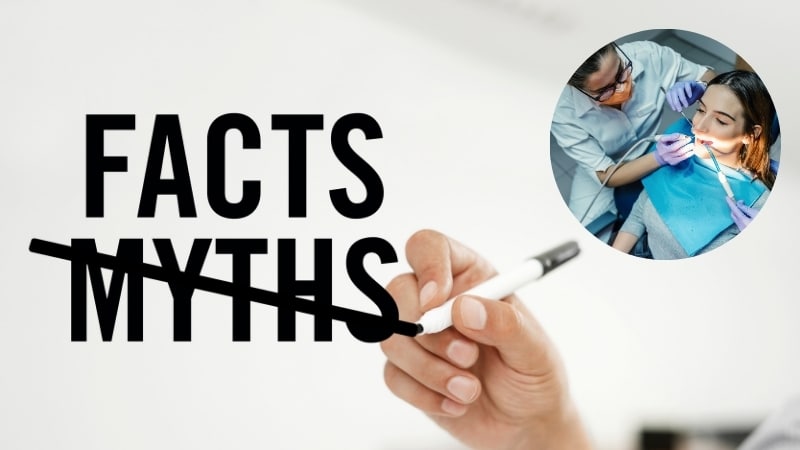
In today’s fast-paced world, where health often takes a backseat to our busy lives, it’s easy to overlook the importance of preventive care. Yet, amidst our daily routines, there lies a silent threat that can manifest within our very mouths: oral cancer. Welcome to a discussion that transcends mere dental care—it delves into the critical realm of oral cancer screenings and their paramount significance in safeguarding our health.
What is Oral Cancer Screening?
Oral cancer screening is a crucial preventative procedure performed by dental professionals to detect early signs of cancerous or precancerous conditions in the mouth. This process involves a thorough examination of the oral cavity, including the lips, gums, tongue, cheeks, roof and floor of the mouth, and the throat. In a typical screening, the dentist will look for lumps, irregular tissue changes, or sores that do not heal. Some dental practices also use advanced technologies such as fluorescence or tissue staining to enhance the detection of suspicious areas. Regular screenings are a proactive approach to maintaining oral health and catching potential issues before they become severe.
Benefits of Dental Cancer Screenings
Regular oral cancer screenings are essential for maintaining optimal health. Early detection through these screenings significantly improves treatment outcomes, often leading to successful recovery with less invasive treatments. They also heighten health awareness by identifying other oral health issues like infections or gum disease, ensuring prompt attention and preventing complications. Additionally, screenings encourage better oral hygiene and healthier lifestyle choices, such as quitting smoking and reducing alcohol consumption, thereby lowering cancer risks. Overall, oral cancer screenings are a proactive, preventive measure that plays a crucial role in a holistic health strategy.
Who Needs an Oral Cancer Examination?
Oral cancer screenings are essential for everyone, but certain groups are at a higher risk and should be particularly vigilant. Individuals over the age of 40 are generally more susceptible to oral cancer, with men being twice as likely as women to develop the disease. This demographic should prioritize regular screenings to detect any early signs of cancer.
Tobacco users, including those who smoke cigarettes, cigars, pipes, or use chewing tobacco, are at an elevated risk for oral cancer. Similarly, heavy alcohol consumption increases the likelihood of developing the disease, and the combination of tobacco and alcohol use further amplifies this risk. People in these categories should schedule regular screenings to monitor their oral health closely.
Those with a history of significant sun exposure should also be cautious, as this can lead to cancer of the lips. Additionally, individuals with a family history of cancer or those who have been previously diagnosed with oral cancer should undergo frequent screenings to catch any recurrence or new developments early.
Lastly, anyone with signs or symptoms that could indicate oral cancer, such as persistent sores, unexplained bleeding, numbness, or lumps in the mouth or neck, should seek an examination immediately. Early intervention is key to effective treatment, and regular screenings are the best way to ensure any issues are detected promptly.
Symptoms and Early Detection
Recognizing the symptoms of oral cancer can significantly impact outcomes. Early-stage oral cancer might not be painful, which is why it often goes unnoticed without regular screenings. Common symptoms include persistent mouth sores, lumps, or thick patches. Red or white patches inside the mouth or on the lips, difficulty swallowing, and changes in speech can also be indicative of oral cancer.
Advanced Screening Techniques
Modern advancements in dental technology have enhanced the effectiveness of oral cancer screenings. Traditional visual and tactile examinations are now often supplemented with advanced tools that improve detection rates. Fluorescence imaging, for example, uses special lights to highlight abnormal tissues that might not be visible to the naked eye. This technique helps in identifying early changes in the cells lining the mouth.
Tissue staining is another advanced method where dentists apply a special dye to the mouth. Abnormal cells may absorb the dye differently than healthy cells, making them easier to identify. Additionally, brush biopsies can be used during a screening. This involves using a small brush to collect cells from a suspicious area, which are then analyzed for cancerous changes.
These advanced techniques make screenings more comprehensive and increase the likelihood of early detection. Patients benefit from the enhanced accuracy of these methods, which can identify potential issues at a stage when they are most treatable.
Lifestyle Changes to Lower Risk
While regular screenings are essential, making lifestyle changes can significantly reduce the risk of developing oral cancer. Quitting tobacco use is one of the most effective ways to lower this risk. Tobacco, in all its forms, is a major cause of oral cancer, and cessation can lead to significant health benefits.
Maintaining a healthy diet rich in fruits and vegetables can also contribute to oral health. These foods are high in vitamins and antioxidants, which help protect cells from damage. Additionally, practicing good oral hygiene, including regular brushing and flossing, can prevent infections and other conditions that might increase the risk of cancer.
In conclusion, oral cancer screenings are a vital component of preventive healthcare. They offer the best chance for early detection and successful treatment of oral cancer. By understanding the process, benefits, and importance of these screenings, individuals can take proactive steps to protect their oral and overall health. Regular screenings, coupled with a healthy lifestyle, can significantly reduce the risk of developing oral cancer and improve long-term health outcomes.



